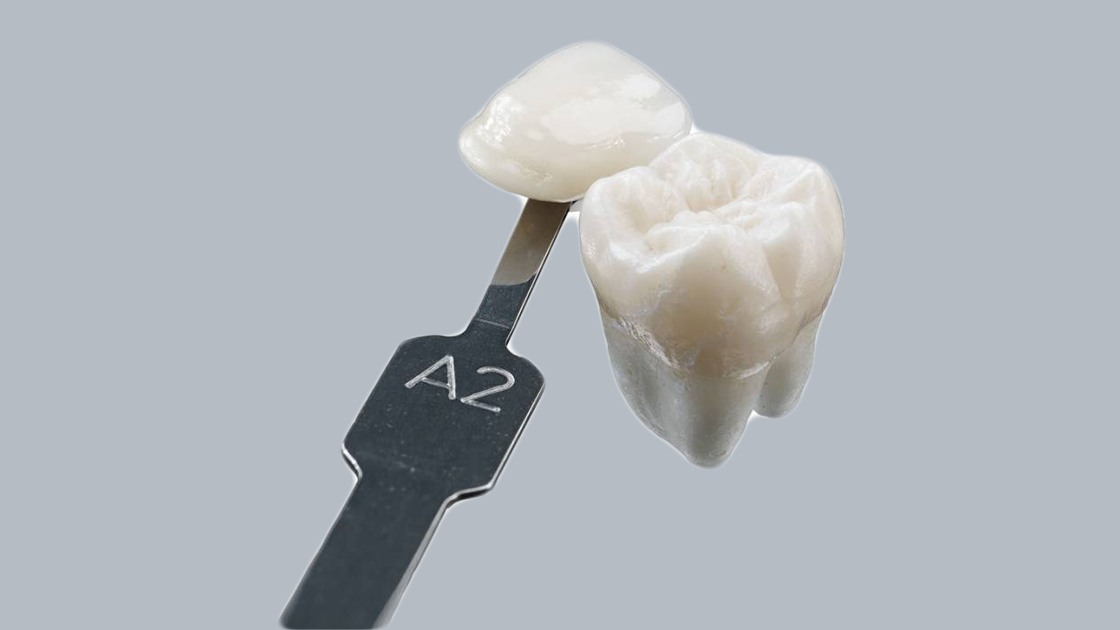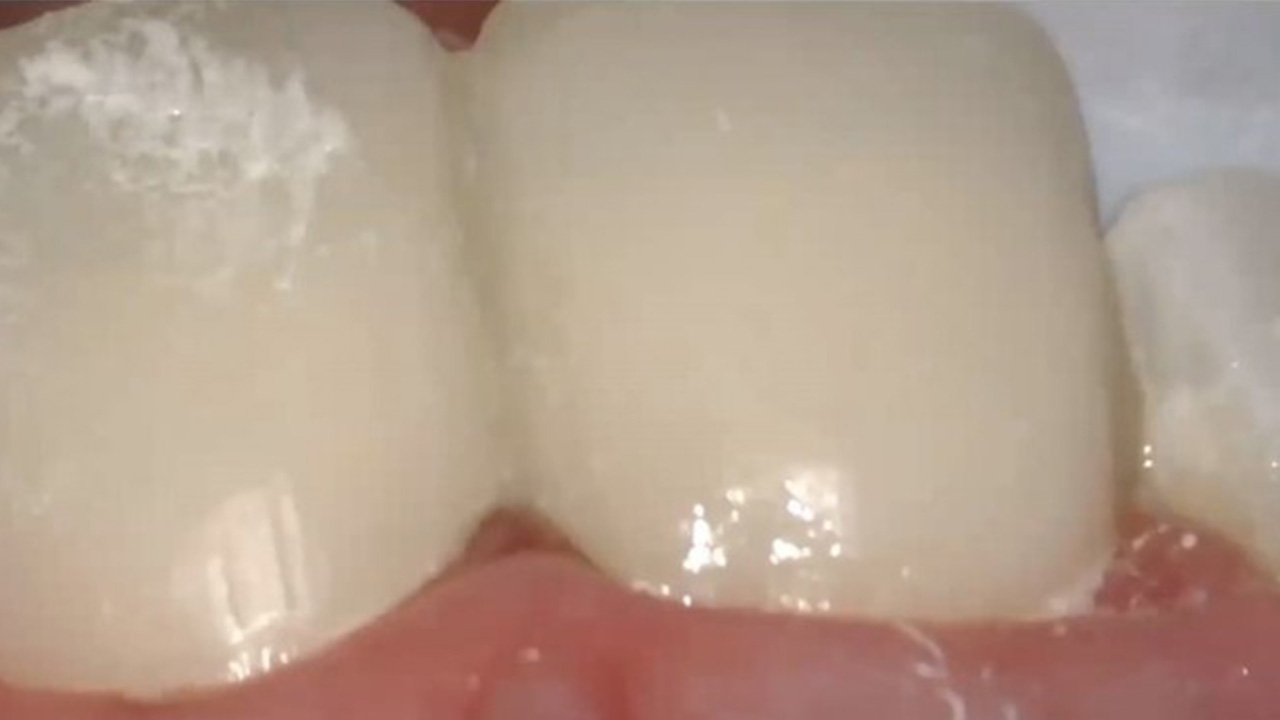Use promo code Q1ESS25 at checkout. Terms Apply*
Contents:
- The role of a cement in providing a good marginal seal
- The importance of cleaning up excess cement
- Needs for cementing different substrates (glass ceramic vs. zirconia)
- Types of luting cements: resin vs. conventional
- When each type of cement is recommended
- Obtaining Long-term Success for Glass Ceramic and Zirconia Crowns with Help from Dentsply Sirona
Crown cementation is the culmination of an indirect restoration. For patients, it is an awaited moment to look forward to. As a clinician, it is a high-precision procedure that helps to ensure the long-term success of the crown. Here, we’ll look at the requirements of contemporary restorative materials used for single-unit crowns, the importance of cement selection and recommendations.
The role of a cement in providing a good marginal seal
In addition to excellent retention, crown cementation must result in a good marginal seal for successful long-term outcomes. Even with the most accurate techniques and materials available, microgaps (microscopic marginal gaps) exist between the restoration margins and the tooth. The luting cement should reliably fill microgaps, seal off the tooth structure at the margins, and maintain marginal integrity. Of course, that also means that the cement should be insoluble and resist degradation over time. So why is marginal integrity so important? It prevents microleakage, reducing the risk of sensitivity, secondary caries at the margins and ultimately, premature restoration failure.
![Figure 1 Clinical survival [years] of 676 endodontically treated posterior teeth and cavities with up to three surfaces (three to four remaining walls) by Dammaschke T. et al., 2013 6](/en/discover/discover-by-topic/by-category/restorative/crown-cementation-prime-bond-active/_jcr_content/root/container/dentsplycontainer_114613258/image.coreimg.70.1600.jpeg/1739812984033/res-image-thumbnail-suc-topic-cementation-marginal-gap.jpeg)
The importance of cleaning up excess cement
Removal of excess cement at the time of crown cementation is essential to preserve periodontal health. Failure to thoroughly remove excess cement during clean-up results in it acting as a gingival irritant. Excess cement has a rough surface that encourages bacterial colonization and biofilm accumulation which leads to gingival inflammation with local swelling and bleeding. And, excess cement interproximally can make it impossible for patients to use dental floss. In the longer term, periodontal pockets with bone loss can occur. Marginal discoloration is a further problem associated with excess cement.
With respect to cement-retained implant-supported crowns, excess cement is a well-known risk factor for peri-implantitis. The excess cement encourages biofilm accumulation – in this case resulting in peri-implant mucositis rather than gingivitis. Over time, peri-implant mucositis progresses to peri-implantitis with increased probing depths, bleeding upon probing, peri-implant bone loss and, eventually, may result in loss of the implant.
These negative outcomes highlight the need to choose a cement that offers easy clean-up with thorough removal of the excess cement adjacent to both natural teeth and implants.
Needs for cementing different substrates (glass ceramic vs. zirconia)
Glass ceramics and zirconia are both excellent choices for single-unit crowns. Following standard procedure, both are conditioned on their inner surface (the intaglio) prior to cementation. Three steps are generally involved: 1) ‘roughening’, 2) cleaning, and 3) chemical pre-treatment. The first step increases the surface area available for bonding, while the third step improves bonding to the cement. The end goal is to obtain and optimize a durable crown to cement bond. Glass ceramics and zirconia do, however, differ in how these steps are achieved.
Glass ceramic: The inner surface is first etched using hydrofluoric acid, then cleaned. A silane coupling agent is then used for chemical pre-treatment of the inner surface. Of note, while this is a general protocol, there may be no need for silanization depending on the cement selected.
Zirconia: The inner surface is sandblasted with aluminum oxide or blasted with alumina-coated silica particles. After sandblasting, chemical pre-treatment of the surface using a zirconia primer, or adhesive containing PENTA or MDP, is recommended. However, depending on the luting cement selected, this step may not be required (see below).
Types of luting cements: resin vs. conventional
Many cements are available for crown cementation. Traditional options include zinc phosphate cement (ZnPO4), polycarboxylate cements (PCC), glass ionomer and resin-modified glass ionomer cements. Additional options now include bonded resin-based cements and self-adhesive cements, as well as bioceramic cements based on a combination of calcium aluminate and glass ionomer. Desirable attributes include:
- Suitable flowability and film thickness
- Suitable bond strength
- Excellent marginal seal
- Stability and durability
- Esthetics
- Technique tolerance
- Efficient procedure / technique
- High radiopacity
When each type of cement is recommended
With a plethora of options, which cement do you choose? The essential requirements include stability, durability, an excellent marginal seal, and a low film thickness and flowability. Also of importance is choosing a cement with a high radiopacity to help detect any excess cement that may remain subgingivally. The relative importance of other attributes varies. For example, a ‘suitable’ bond strength is going to depend not only on the restorative material but also on whether the preparation is retentive or non-retentive in nature. An efficient procedure is always desirable, where possible. Esthetics is essential in the anterior esthetic zone but may be less critical than another attribute for a posterior clinical situation. Similarly, technique tolerance can be more important in difficult or complex clinical situations and the ability to thoroughly remove excess cement is always important. Here are three key considerations for luting cements:
- How many steps are involved? All things being equal, the fewer steps and quicker the better!
- How easy is it to obtain isolation? Will a rubber dam be used? Moisture tolerance is desirable when isolation is challenging. In this situation, a glass ionomer or resin-modified glass ionomer may serve well as these are moisture and technique tolerant.
- How important is high strength and esthetics? If you want high strength (including high bond strength) along with esthetics, one option is bonded resin-based cement – however, these cements are not moisture tolerant. Adhesive resin cements are the most technique sensitive luting cements.
Self-adhesive cements are becoming widely used and popular as these create a bond to the tooth surface directly, without the need for etchants, primers, or bonding agents. This in turn saves time and can be particularly helpful for subgingival preparation margins. However, self-adhesive resin cements generally have reduced enamel bond strengths. While these cements are suitable for high-strength glass ceramics and zirconia, the low enamel bond strengths they achieve make them unsuitable for low-strength glass ceramics. If a compatible adhesive system is used in addition to the self-adhesive cement, a higher bond strength to enamel is obtained.
Adhesive cements are so called because they require the application of adhesive to the tooth prior to their use. If on the one hand this makes them more technique sensitive, on the other it increases bond strength considerably. Thus, they are especially indicated in cases of non-retentive preparations (partial crowns, such as inlays, onlays, veneers, or in the case of full crowns, when the stump is shorter than 4 mm or the preparation angle is greater than 20°) or when working with low flexural strength (< 350 MPa) materials, such as composites, feldspathic and certain glass ceramics. In addition, in the case of veneers, as esthetics are of utmost importance, purely light-cured adhesive cements should be preferred over self-adhesive and/or dual-cure cements, for they have higher color stability and are usually available in a wider range of shades. However, the use of adhesive cements is not limited to these indications and includes all cases where a self-adhesive cement can be used, while the opposite is not true.
Bioceramic cements are based on a combination of calcium aluminate and glass ionomer offering high strength, esthetics, moisture, and technique tolerance, and requires few steps – no etching, priming, or bonding. Similar to self-adhesive resin cements, they are not suitable for low-strength ceramics.
For high- and low-strength glass ceramics and zirconia, resin-based cements are indicated.
Note that ZnPO4 and PCC offer low retention/bond strength, an exothermic reaction and leakage occur with ZnPO4 and PCC exhibits solubility. Both cements have been superseded by others and are viewed today as poor choices for glass ceramics and zirconia.
Obtaining Long-term Success for Glass Ceramic and Zirconia Crowns with Help from Dentsply Sirona
The long-term success of glass ceramic and zirconia crowns depends in part on the luting cement and the technique used for crown cementation. Choosing the right products and protocols is essential. That’s where Dentsply Sirona’s Calibra® Ceram Adhesive Resin Cement+ Prime&Bond active® Universal Adhesive and Calibra® Universal Self-Adhesive Cement can help.

Calibra® Ceram is an adhesive resin cement formulated for maximum strength, making it ideal for glass ceramics / CEREC Tessera™ blocks. This fluoride-containing cement can be light-cured, self-cured or dual-cured and offers excellent esthetics in 5 esthetic color-stable shades.
Simplified, reliable cementation is designed in, as well as a low film thickness, a rapid 5-second tack cure and a 45-second gel phase for easy clean-up.

When used with Dentsply Sirona’s Prime&Bond active® adhesive, excellent strength is obtained. Prime&Bond active® adhesive offers low film thickness and versatility. Thanks to the unique Active-Guard™ Technology, it provides a reliable bond on overly wet or dry dentin, adding more robustness to the cementation procedure. It can be applied in all etching methods (self-etch, etch&rinse or selective enamel etching). It contains MDP, which makes it suitable for the use as Zirconia or metal primer. When used with Calibra® Ceram or Calibra® Universal, no additional Activator is needed.
Calibra® Universal is a two-component, dual-cure, high strength self-adhesive cement which contains fluoride. Calibra Universal combines esthetic shading with a self-etching adhesive, making it suitable for the permanent cementation of metal, PFM, resin/composite, ceramic and porcelain inlays, onlays, crowns and bridges and endodontic posts without application of a separate dentin/enamel adhesive bonding agent/system. It is the simple choice for successful results and no need for additional etchant or adhesive.
With its wide tack-cure window of up to 10 seconds and an extended 45-second gel-phase, Calibra Universal cement ensures an easy, stress-free cleanup for all CEREC MTL™ Zirconia and glass ceramic restorations.
The high radiopacity of Calibra Universal can aid in providing a clear view of the material within the crown. This helps avoid a misdiagnosis of gaps or voids, which can lead to costly remakes.

Here at Dentsply Sirona we want to support you further with our online dental academy complete with webinars, how-to videos, and real-world examples on how to create streamlined solutions with efficient procedures and even greater patient satisfaction. Contact us now and let’s get started!
References
Hidalgo J, Baghernejad D, Falk A et al. The influence of two different cements on remaining cement excess in cement-retained implant-supported zirconia crowns. An in vitro study. BDJ Open 7, 5 (2021). https://doi.org/10.1038/s41405-021-00063-8.
Lawson N, Mangla P, Mantri C. Clinical Solutions for Removing Excess Cement. Dentistry Today. February, 2022.
Rita A, Reis J, Santos IC, Delgado AHS, Rua J, Proença L, Mendes JJ. Influence of silane type and application time on the bond strength to leucite reinforced ceramics. Ann Med. 2021 Sep 28;53(Suppl 1):S50–1. doi: 10.1080/07853890.2021.1897360.
van den Breemer CRG, Gresnigt MMM, Cune MS. Cementation of Glass-Ceramic Posterior Restorations: A Systematic Review. Review Biomed Res Int. 2015;2015:148954. doi: 10.1155/2015/148954.

















